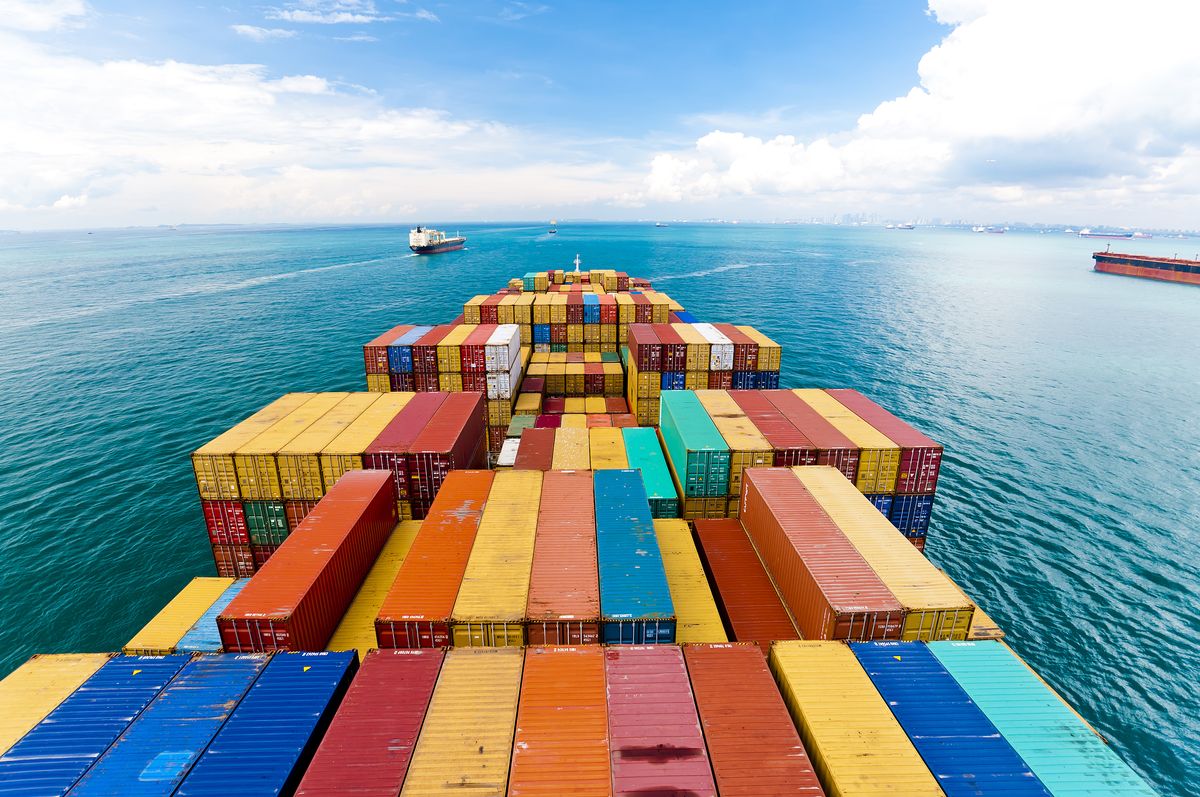The worldwide flow of goods seems to continue to be highly volatile in the coming year. Bottlenecks in production capacities in Asia, in semiconductor chips and in transport space on container ships remain tight. And issues are deepening during the holiday season.
Credit insurer Euler Hermes estimates in a recent study, “Battling out supply chain disruptions”, that around 4% of traded goods worldwide are currently stuck on ships or at terminals.
The supply chain outlook has been uncertain this year, particularly in China, a key global exporter. And the country remains the bottleneck for the time being, according to Euler Hermes, due to the country’s strict zero-covid policy as well as strong volatility in demand and logistics in the wake of the Chinese New Year.
Besides China, manufacturing capacity in Malaysia, Thailand, and Vietnam also faced pandemic disruptions, stressing global supply chains further.
Apple forced to cut production goals
Semiconductor chip shortages remain a major supply bottleneck this year, continuing to weigh on the production of consumer goods, auto parts, and electronics. The supply-demand imbalance was also spurred by a spike in Covid-19 cases globally.
Feeling the pinch from the semiconductor shortage and China’s ongoing power restrictions, Apple is cutting production goals. The company has cut iPhone 13 production targets by up to 10 million units from its initial goal of 95 million models in 2021.
For the first time in over a decade, Apple was forced to stop the production of iPhones at several supplier-operated plants in China, according to a Nikkei Asia report.
Workers have been getting time off during the holiday quarter, which is one of the busiest production times of the year. This comes at a time when Apple’s production goes into overtime, with workers getting extra shifts and 24-hour production schedules, to meet the global holiday shopping demand.
“That has never happened before. The Chinese golden holiday in the past was always the most hustling time when all of the assemblers were gearing up for production,” a supply chain manager told Nikkei Asia.
Production of its flagship iPhone 13 smartphones fell 20% short of previous plans in September and October. During Apple’s last earnings call in October, Chief Executive Officer Tim Cook had warned that the struggle to get enough components, particularly chips, would cost Apple more than $6 bn in revenue during the holiday quarter.
Expressing concerns about ongoing supply chain disruptions, the largest iPhone assembler – Taiwan’s Foxconn – is also cautious on the 2022 revenue outlook. Earlier in November, Foxconn Chairman Liu Young-way said during a conference call that the company’s fourth-quarter revenue for electronics, including smartphones, would fall over 15%. The company expects the supply chain issues to last until the second half of 2022.
Another of Apple’s top iPhone assemblers from Taiwan, Pegatron, has also closed production plants, workers have been sent on holiday and can reduce overtime. The company already lost production in China during the first quarter this year due to the coronavirus outbreak.
Asia supply chain issues to persist in 2022?
As consumer demand stays strong, Asian countries are projecting a gradual recovery in trade, following an easing from coronavirus-related restrictions. However, rising raw material costs, logistic constraints, the trajectory of the pandemic as well as inflation risks remain major concerns of uncertainty for global trade.
According to Sian Fenner Lead Asia Economist at Oxford Economics, Asia’s production in the third quarter was impacted, but manufacturing activities in factories, ports and logistics centres are ramping up again to meet strong global demand.
However, the news of the new Omicron variant has increased the risks of exacerbating supply-chain disruptions. Fenner warned that Asia GDP growth could be 1.6 points lower at 4% next year against their baseline of 5.6%.
“While the worst may be behind us, we don’t expect a full easing in supply chain disruptions before H2 2022. Thereafter, as consumers pivot back towards spending on services, global demand for shipping should ease. In fact, in 2023 we could be back in a state of excess capacity with freight prices falling sharply as based on current orders, shipping capacity is set to rise around 22% over 2022-24,” the analyst added further.
Also the Euler Hermes economists expect the supply chain chaos to ease in the second half of 2022, on the backdrop of cooling consumer demand, restocking of inventories and increased shipping capacity. The report forecasts that global trade volumes will rise by 5.4% in 2022 and 4% in 2023, after rising by 8.3% in 2021.
The report suggests that Asia-Pacific nations will remain the main winners in terms of export gains for the next few years, with the energy, electronics, machinery and equipment sectors outperforming in 2022.










 Australia
Australia China
China India
India Indonesia
Indonesia Japan
Japan Malaysia
Malaysia Philippines
Philippines Singapore
Singapore South Korea
South Korea Taiwan
Taiwan Thailand
Thailand Vietnam
Vietnam Germany
Germany Hong Kong
Hong Kong USA
USA Switzerland
Switzerland Singapore
Singapore
 United Kingdom
United Kingdom








